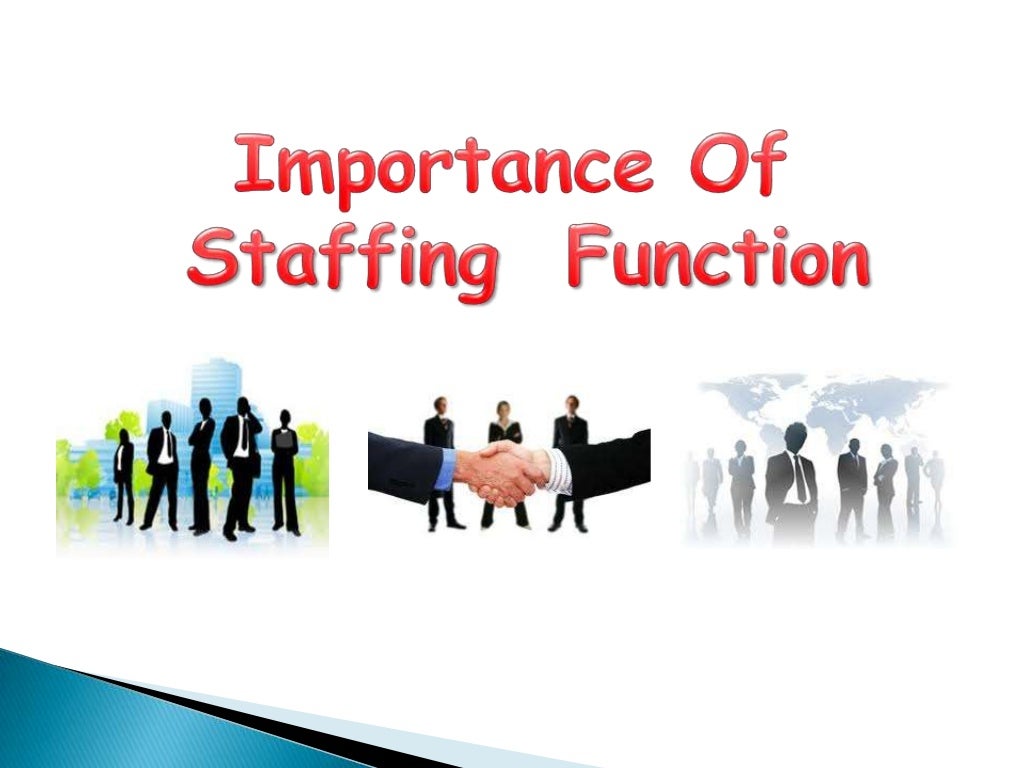
Definition: Staffing is a managerial function which involves obtaining, utilising and retaining, qualified and competent personnel to fill all positions of an organisation, from top to operative echelon. In finer terms, staffing is placing the right person at the right job.
It aims at employing, deploying and monitoring a competent and contented staff, i.e. daily wage earners, contract employees, consultants, regular employees, etc., to undertake various managerial and non-managerial activities in an organisation.
 |
| source : google image |
Importance of Staffing
- It helps in the finding out efficient and effective workforce, to fill different posts in the organisation.
- It improves organisation’s performance and productivity by appointing the right person at the right job.
- It facilitates in identifying the staffing requirements of the organisation in future.
- It ensures continuous survival and growth of the organisation, by way of succession planning for executives.
- It develops personnel to take up top managerial positions of the organisation.
- It ensures training and development of the people working in the organisation.
- It assists the organisation in making the optimum use of human resources.
Therefore, staffing increases employee morale and job satisfaction. Further, it helps the top management in ascertaining the manpower requirement resulting from a promotion, transfer, employee turnover, retirement, etc. of the existing employees.
Process of Staffing
Staffing process stresses on equipping the organisation with an exact number of people, and that too at the right time and place, which will help the organisation to attain its objectives effectively. The staffing process involves a series of steps, discussed as under:
- Manpower Planning: Popularly known as human resource planning, it is the process of forecasting the firm’s demand for and supply of competent workforce, in the adequate number in future.
- Recruitment: It entails seeking, stimulating and obtaining, as many applications as possible from the eligible and competent candidates.
- Selection: It is the decisive step of the staffing process, which involves differentiating between applicants, so as to identify and choose the candidate who best fulfils the qualifications and requirements of the vacant position.
- Placement: The allocation of rank and responsibility to selected candidate, is known as Placement.
- Orientation and Induction: After the placement, the next step is to provide the new employee with the information they require for functioning comfortably and efficiently in an organisation. Induction is the process of introducing the new joinees to the job and the organisation as well.
- Training and Development: In this step, the new joinees undergo training to acquire specific skills. Development implies learning opportunities, designed by the organisation, to ensure the growth of employees.
- Performance Appraisal: A rational assessment and evaluation of employee’s performance against clear-cut benchmarks.
- Career Management: Career Management is a process in which the individual understand and learns new skills and interests and use them for the betterment of the organisation and self.
- Compensation: Compensation refers to the consideration which an individual gains, in return for his/her contribution to the organisation.
Staffing process recognises the significance of each person employed by the organisation, as the work of every individual, keeps the organisation going. So, acquiring a good staff is a tough task, because the success of the organisation depends on it and so, the process should be performed attentively.
Further, the top executives of the organisation should be aware of the national labour laws, which applies to the organisation. Moreover, the organisation should be clear on how many employees, it is going to recruit, for carrying out various activities of the organisation
Comments
Post a Comment